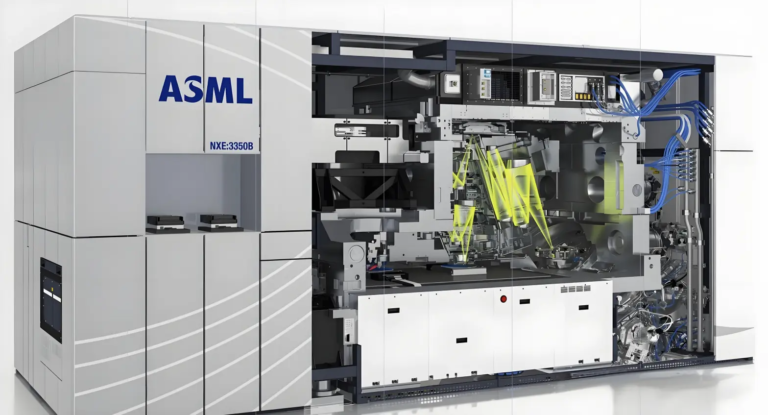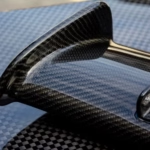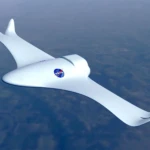Understand the core differences: CNC Machinery and Machining Center
In the world of precise manufacturing, terms like this "CNC" and "Processing center" Usually used, sometimes interchangeable. However, they represent different concepts that have a significant impact on your productivity, part complexity, and bottom line. At Greatlight, as experts in advanced five-axis CNC machining, we often encounter questions about these differences. Let’s uncover their mystery, focusing on their role in modern metal manufacturing and why understanding them is essential to choosing the right solution for your project. Doing so will help you avoid expensive mismatches and unlock optimal manufacturing potential.
Definition Term: Basic
CNC (Computer Numerical Control): This is the overall technology and methodology. CNC refers to Machine tool automation Use a computer that executes a sequence of pre-programmed commands. Think CNC is "brain" and control system. It determines the precise movement of the machine tool (such as a mill, lathe, grinder or router) along a defined path (axis) to shape the raw material.
- Example: CNC lathe (turn), CNC mill (milling), CNC router (wood/plastic), CNC grinder. These range from simple 2-axis computers to more complex configurations.
- Core functions: Use programming accuracy instead of manual operation. Focus mainly on one or two specific subtraction processes for each machine setup.
- Machining center: The machining center is Specific types of CNC machinesrepresenting a significant evolution of greater automation and capabilities. In essence, it is a highly refined one. Multifunctional CNC milling machine Designed to perform multiple operations on a single workpiece in one setup (milling, drilling, boredom, attack).
- Hallmark features: What really defines machining centers other than basic CNC mills are:
- Automatic Tool Changer (ATC): The machine can automatically switch carousels or magazines during operation, which can be switched automatically, greatly reducing non-cutting time and enabling complex parts production without manual intervention.
- Enclosed work area: Provides better chip control, safety, and generally integrated coolant systems.
- Higher automation level: Features such as automatic tray changers (APCs) are usually included to exchange workpieces, tool length and diameter compensation probes, and workpiece detection for process inspections while the machine is running.
- Advanced Axis Configuration: Although the basic CNC factory is usually 3-axis (X, Y, Z linear motion), the machining center is usually 3-axis, 4-axis (X-axis add rotation) or 5 axis (add approximately x and y, or rotation of y and z) – This is the major of Greatlight. This is crucial for complex geometric shapes.
- Core functions: Unattended operations are used to produce complex parts that require multiple different operations and orientations without re-fixing.
- Hallmark features: What really defines machining centers other than basic CNC mills are:
Key Difference: Separation Concept
Understanding the differences between CNCs in the general sense and machining center is crucial to select the optimal manufacturing process:
Range and specificity:
- CNC: An umbrella, described Control technology Applied to various single-function machine tools (lass, mills, etc.). This is a category.
- Machining center: one Specific height automatic milling machine In the CNC category. All machining centers are CNC machines, but not all CNC machines are in machining centers.
Automation level and operational continuity:
- CNC (Basic Lathe/Mill): need Manual intervention For critical tasks. The operator must manually change the tool, often start/stop the machine between operations, and reposition different functions of the workpiece. More like automatic help than complete automation.
- Machining center: Specially for Minimum operator intervention During the processing cycle. ATC processing tool switching, probe management tools and artifact settings/verification, APC (when equipped) allows unattended batch processing. This maximizes spindle uptime and throughput.
Functional multifunctional integration with process:
- CNC (Basic Lathe/Mill): Good at A specific, usually repetitive task Each setting. CNC lathes mainly turn and face; the basic 3-axis CNC mill mainly uses workpieces to mill, drill bits and faucets with workpieces in a fixed direction. Complex parts require multiple settings on different machines.
- Machining center: design Multi-process integration. Ability to perform complex milling, complex drilling modes, precise drilling, tapping and contouring, Often on multiple faces a part (especially the 4th and 5th axes), All in one fixture. This eliminates setup errors and greatly reduces the lead time of complex parts.
Complexity and geometric capabilities:
- CNC (Basic Lathe/Mill): Best for Prismatic part Or parts that mainly need to be processed from one or two directions. The geometric complexity is limited by the number of axes and needs to be re-fixed.
- Machining centers (especially 5-axis, such as Greatlight): Proficient in production Complex, free-form geometric shapes, organic shapes and parts that need to be processed from a composite angle No replacement. The 5-axis machining center can simultaneously manipulate the tool and/or workpiece along five axes, allowing access to almost any point on the workpiece.
Typical workload and part size:
- CNC: There are a lot of changes. It can be from small desktops to large gantry factories. Often, work envelopes may be tailored to simpler geometry.
- Machining center: A robust structural design is often used to handle larger or more complex parts that require multiple phones to process. Work envelopes can be large, but not only for the maximum size, but also for the ability to manipulate parts that are processed in multiple faces. Greatlight utilizes equipment optimized for complex medium to large-size precision components.
- Investment and operating cost structure:
- CNC (Basic): Generally speaking Reduce initial investment. However, the cost per complex part may be higher due to more settings, increased operator participation, and potential fixed costs.
- Machining center: Significantly Higher initial investment (Capital cost) is caused by complex hardware (ATC, multi-axis mechanism, detection system, complex control). but, The cost per composite part is usually greatly reduced Due to the reduced labor per part, fewer settings, higher accuracy (reduced waste) and faster cycle times. ROI is obvious for complex work.
Conclusion: Choose the right way to make the right manufacturing
CNC technology revolutionized the manufacturing industry and brought accuracy and repeatability to machine tools. The machining center further carried out this revolution, representing the pinnacle of the integrated and highly productive machining of complex components. Choice is not a universal one "Better" Better than the other, but to match the tool to the task:
- Select a specific CNC machine (lathe, simple mill) When your parts are relatively simple, a lot of repetitions involving a single operation (such as a rotation axis), or budget constraints are critical for lower complexity operations.
- Select machining center (especially 5 axes) When your parts exhibit geometric complexity, multiple operations are required (milling, drilling, digging from all angles), requiring extremely high tolerances on multiple faces, or minimizing setup, operator intervention and overall part advance time are critical to your success.
This is where Greatlight is good at. As a professional five-axis CNC machining manufacturer, we take advantage of the full potential of advanced machining centers. Our state-of-the-art multi-axis equipment and production technology are specialized to overcome the toughest metal parts manufacturing challenges. We address the issues of geometric complexity, accuracy, and productivity that are plagued by basic CNC settings. With the ability to handle large amounts of materials, coupled with our comprehensive in-house one-stop post-treatment and surface finishing capabilities, Greatlight offers a seamless solution.
Don’t compromise on complexity, accuracy, or time to market. For custom precision machining, the power of multi-axis integration and automation is required, Greglight five-axis CNC machining is provided. Contact us today to discuss your project requirements and discover how our expertise can provide you with high-quality, cost-effective precise parts – customized to your exact needs.
FAQ (FAQ)
Q: Is the machining center just a beautiful CNC milling machine?
- one: Partly it is fact. Processing center yes Fundamentally, a CNC milling machine is equipped with key advanced features such as an automatic tool changer (ATC), a closed workspace and often an advanced control system. Basic CNC plants often lack ATC and advanced automation, requiring manual tool changes and more operator intervention. Think of machining centers as a high-end multitasking evolution of CNC plants.
Q: Can machining center replace all other CNC machines in my store?
- one: While versatile, machining centers (mainly milling-centered) usually do not effectively replace professional CNC lathes (turns). Turning operations are best performed on a dedicated CNC lathe. Modern workshops are often used simultaneously: machining centers, for complex prismatic/faced parts, and CNC lathes for rotating parts. However, some are highly advanced "Turn" Or milling center able Combining the turning and milling operations of complex parts that require both.
Q: What is The biggest advantage Using machining centers, especially 5 axes like Greatlight?
- one: Key advantages include:
- Single setup processing: Complete complex parts without reconnecting, greatly improving accuracy and reducing lead time.
- Unrivaled geometric capabilities: Machine-to-3-axis machine cannot be contoured with a height of composite angles, undercuts and features.
- Improve accuracy and accuracy: Eliminating multiple settings reduces cumulative errors. Advanced detection ensures dimensional integrity.
- Reduce labor costs: Automation (ATC, APC) minimizes the time of the operator per part.
- Top surface finish: Continuous optimal tool orientation allows for 5-axis motion to improve finish.
- Shorter tools: The ability to orient parts allows for the use of shorter, more rigid tools for improved finish and accuracy.
- one: Key advantages include:
Q: If I have simple parts, is there any reason to use a machining center?
- one: For really simple, high volume parts, only one or two operations on one side (e.g., flat plates with drilling) are required, and a dedicated basic CNC machine (e.g., a 3-axis mill or lathe) may be more cost-effective due to the low machine and programming costs. But, if you "Simple" Parts have functions in many aspects that require auxiliary settings, a simpler 3-axis machining center With ATC With basic machines that require manual tool changes and multiple settings, you can still save time and cost.
Q: What is the cost between basic CNC machining and using machining centers?
- one: Initial Investment: The machining center, especially the multi-axis center, has a The purchase price is significantly higher More than basic CNC machines (lare/factory). Operating cost per part: for Complex parts, Machining centers usually provide The cost per section is much lower Due to the reduction in the waste rate achieved by the installation, labor, fixed costs and single-equipment processing. for Extremely simple large number of parts, Basic CNC machines may initially offer lower per-part cost, but consider carefully analyses. all Requires cost.
- Q: Why should I serve the machining center, especially the 5-axis selection Greatlight?
- one: Greatlight specializes in taking advantage of the full functionality of an advanced 5-axis machining center. We bring:
- Technical expertise: An in-depth understanding of complex multi-axis equipment programming, setting up and operating.
- Advanced Technology: Investment in modern high-precision 5-axis CNC machining centers.
- Material mastery: Experience in efficient processing of various metals.
- Integrated finish: Simplified workflows have internal post-processing (heat treatment, plating, painting, etc.) for faster turnaround.
- Key points of solving problems: Committed to solving challenging partial geometry and strict tolerance.
- Competitive efficiency: The cost-effectiveness of complex parts comes from our high automation, precision engineering and volumetric efficiency – get the best value without compromising quality. Contact Greatlight now for an accurate quote!
- one: Greatlight specializes in taking advantage of the full functionality of an advanced 5-axis machining center. We bring:

















